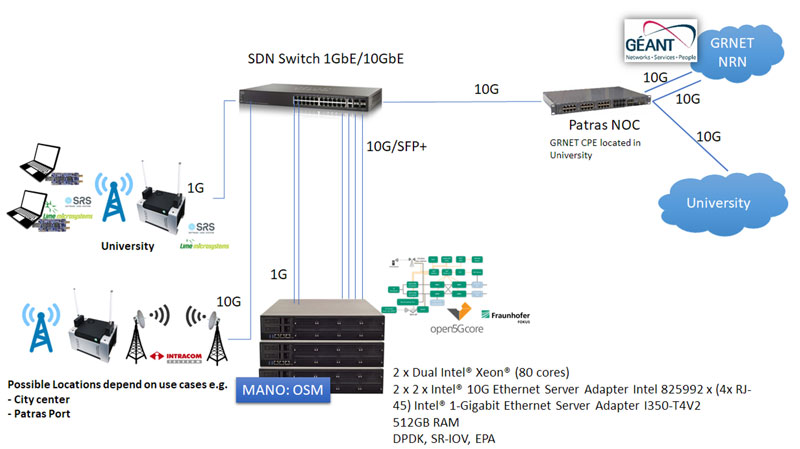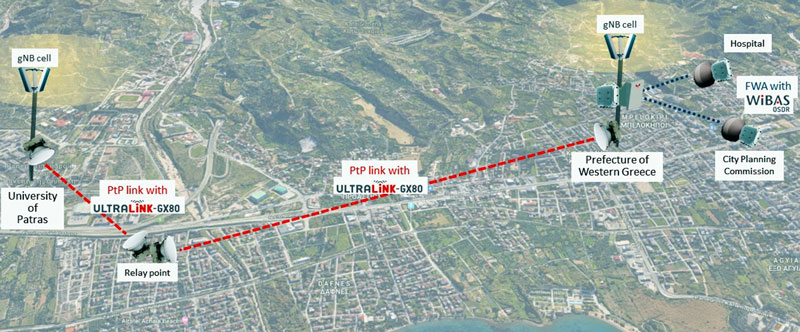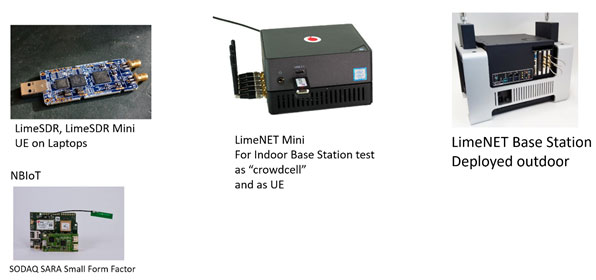by Christos Tranoris and Spyros Denazis (University of Patras)
5G-VINNI, a European H2020 funded project, focuses on the third phase of the 5G PPP by deploying an end-to-end facility which demonstrates that the key 5G network KPIs can be met. The 5G-VINNI facility in Patras/Greece is an exemplary open source 5G facility, which can be accessed and used by various vertical industries.
5G aims to significantly improve the capabilities of network infrastructure in terms of the supported key performance indicators (KPI). The telecommunications industry has aligned itself to a number of KPIs, including “1000 times higher mobile data volume per geographical area”, “10 to 100 times more connected devices”, “10 times lower energy consumption” and “end-to-end latency of less than 1ms” [1]. The 5G network will be a key asset to support societal transformation, societal cohesion and sustainable development by empowering the vertical industries. In a number of white papers and publications the 5G PPP has described use cases and requirements of several vertical industry sectors, such as automotive, e–Health, energy, entertainment, manufacturing and others [1].
5G-VINNI follows certain guidelines to implement a 5G E2E facility that is composed of several interworking 5G sites. We use the term 5G end-to-end (E2E) facility to denote a unified set of network, compute and storage resources providing E2E services modelled according to 5G architecture [2]. Currently VINNI facilities around Europe have started deploying 5G New Radio and 5G Core solutions with novel ETSI compliant Network Function Virtualization Orchestrators (NFVOs) based on either commercial (e.g. NOKIA’s FlowOne) or open source ( ETSI’s Open Source MANO) while an End-to-End solution is implemented for Network Connectivity as well as Service Orchestration.
The 5G-VINNI facility in Patras/ Greece is an exemplary open source 5G-IoT facility. This means that most of the installed components are offered as open source but there are also dedicated components and services to support 5G-IoT scenarios. Various solutions are deployed in the Patras/Greece facility, thus creating a unique 5G playground for KPI validation and support for future verticals. In Greece/Patras 5G facility site the following tasks are performed with the 5G-VINNI project:
- Providing 5G standard-conformant components and core network infrastructure;
- Provide mmWave backhaul to link the access to the core network, and Fixed Wireless Access to provide broadband services to the facility;
- Integration of Next GenOpen5GCore (from Fraunhofer FOKUS) together with an SDR platform and UEs and g/eNB (based on Limemicro SDR and SRS LTE open source solutions);
- Enabling the E2E deployment of multiple customised-slices over the whole network – access, transport and core. This includes the slicing of the IoT devices at the edge of the network;
- Supporting Multiaccess Edge orchestration and mobility management features for the support of interactive mobile streaming edge services.
Figure 1 displays a high-level view of the Patras facility site end-to-end design including all the necessary components. The facility will be interconnected with GRNET NRN in Athens that will allow high speed connectivity to public internet but also to dedicated GEANT links or VPN connections with other 5G-VINNI sites or other universities or research institutes across Europe.

Figure 1: Patras facility site end-to-end design.
Detailed radio planning studies (see Figure 2) have been performed by Intracom Telecom (a Greek company/partner of 5G-VINNI) to identify the optimum locations, the appropriate equipment and its configuration, in order to provide high-speed fixed wireless access to two public service establishments, and to cover this, along with a collocated gNB, with high capacity, low latency, long range backhaul. Point-to-Point mmWave wireless links, operating at 71-76/81-86 GHz and delivering up to 10 Gbps, will interconnect the university campus with selected sites several kilometres away, backhauling the gNBs . Fixed wireless access (FWA) links at 26/28 GHz bands, providing up to 1 Gigabit Ethernet to the subscriber and up to 1.6 Gbps aggregate capacity per sector, will interconnect two buildings of public interest in the Patras sub-urban area, providing access to 5G-VINNI core network services.

Figure 2: FWA and Backhaul Networks at Patras Facility Site.
The RAN section of the Patras facility will comprise both an indoor and outdoor testbed. The indoor testbed will be primarily utilised for short-distance RF link experiments using low power SDRs. This more controlled environment is ideal for prototyping and more preliminary experimentation, before placing the radio nodes in the field. The outdoor testbed will, in turn, be mainly focused on long-distance experiments with network topologies that better match those observed in real-world RANs. The equipment is based (see Figure 3) on Limemicro’s SDR products. The 5G mobile core is realised by the deployment of Fraunhofer FOKUS’ Open5GCore. Finally, the cloud/network function virtualisation infrastructure (NFVI) is based on Openstack and Kubernetes and utilises generic off-the-shelve switches.

Figure 3: Equipment used.
Currently, the Patras facility has already met the challenge of delivering a 5G facility based mostly on Open Source components. Due to lack of 5G NR UEs SDRs cards attached on laptops have been used to initiate testing of 5G KPIs. The facility implements network slicing and slice templates utilizing open source components thus the facility delivers isolated logical networks, running on common infrastructure, mutually isolated and created on demand. The performed tests so far involve both Virtual and Physical Network Functions (VNFs/PNFs), various PoCs have been performed or scheduled in near term (like concurrent execution of different slice types eMBB and URLLC) while the facility prototypes the automated orchestration and delivery of an end-to-end isolated 5G network for every tenant, allowing multiple experiments to be deployed, depending however on the available resources.
The following use case is performed in the facility and will help to measure various 5G key performance indicators:
- First person view remote-controlled vehicle/drone, which can provide real time video streaming from an on-board camera allowing the user to control and move the vehicle/drone. This use case includes elements from both enhanced mobile broadband (eMBB) and ultra-reliable and low latency communications (URLLC). Here the facility’s E2E solution creates two slices involving both VNFs and PNFs. The drone is based on Intel’s Aero platform where we have attached an SDR solution that allows to test interconnectivity with the 5G Core and investigate 5G NR KPIs. Still the research is heavily involved in the area of optimizing the latency for controlling the drone and delivering on demand a URLLC slice type. Next use cases are planned to be performed in near future as well as from new ICT-19 EU funded projects:
- 360O video broadcast (eMBB): video streaming from a person equipped with a 360o camera to a viewer;
- Coverage study and slicing in NB-IoT;
- Augmented reality (eMBB/URLLC): delivery of annotations on top of a video stream captured by an end user of the service.
References:
[1] “5G PPP white Papers.” [Online].
[2] 5G PPP Architecture Working Group, “View on 5G Architecture, Revision 2.0,” Tech. Rep., December 2017. [Online].
Please contact:
Christos Tranoris
University of Patras, Greece











